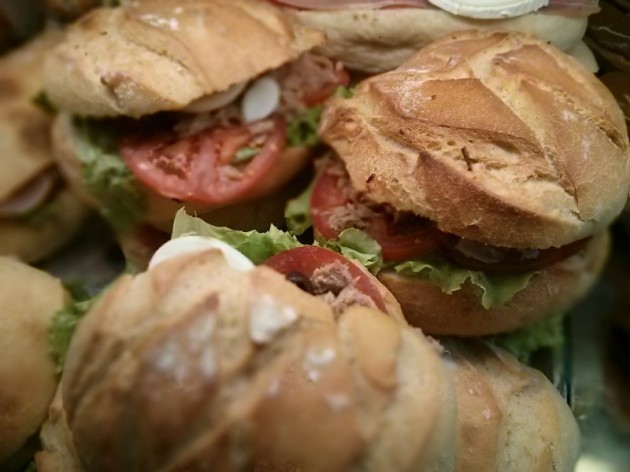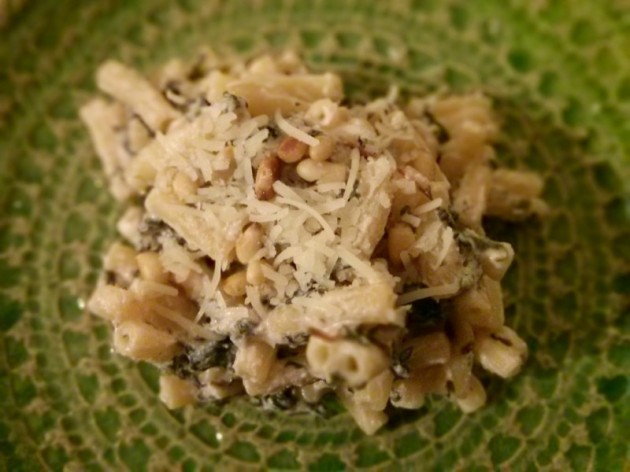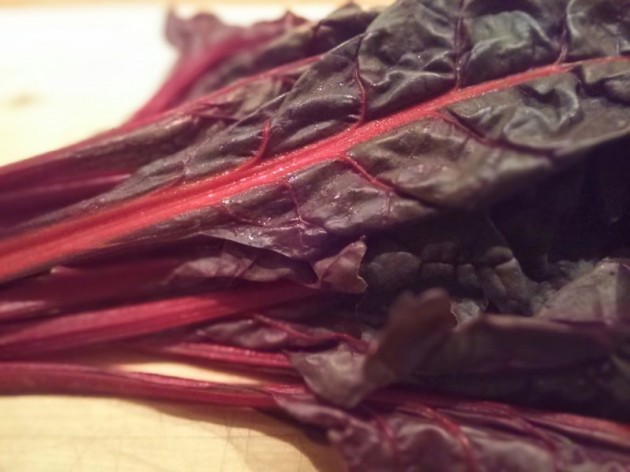For friends of ours who also lived in the area some years ago, any visit back to Nice involves a search for the perfect pan bagnat, and until this most basic of food cravings is satisfied, no trip is complete. Inspired by their enthusiasm, we have become fans too and were lucky enough to have double helpings during our last stay. It’s always fun to see how each ban bagnat varies slightly from the next.
You may have already seen a photo of the pan bagnat we found at La Fougasserie in Nice this summer, but our base on this trip was Roquebrune Cap Martin and on my morning strolls down to the popular Boulangerie Rey & Fils I endured several mouthwatering encounters with their freshly-made, stuffed rolls which would stare out at me from behind the counter. But I was only there for a breakfast baguette and so, morning after morning, I resisted temptation, and if you check out the photo at the top of this post you will see how difficult this was. Towards the end of the week, however, I found proper, unfilled pan bagnat rolls for sale in Monaco – large ones and this is important because there’s a lot of filling to pile into one of these sandwiches. With the perfectly designed, beautiful rolls appearing before me unexpectedly, I gave in. It was time for the DIY pan bagnat.
So what is this irresistible speciality? Its literal meaning is soaked bread, and years ago it was a salad using the same vegetables and fish we see in today’s ‘sandwich’. Back then torn pieces of stale bread were thrown into the salad and they would soak up the olive oil, vinegar and the juice from the tomatoes. Nowadays things have perhaps become more convenient and the aforementioned ‘croutons’ have been replaced by white bread rolls into which the same salad and fish mixture is stuffed. Essentially pan bagnat is salade niçoise in a roll. The fundamental fillings include tuna and/or anchovies, sliced tomatoes, black olives, sliced hardboiled eggs, and a variety of other ingredients according to who you believe: radishes, green peppers, spring or regular onions, broad beans, tender baby artichokes, gem lettuce, cucumber and basil all get a mention in someone’s pan bagnat. The whole mixture is bound together with a generous slug of extra virgin olive oil and a splash of vinegar.
We enjoyed our ‘homemade’ pan bagnat sitting out on the terrace with a view straight across the bay to Monaco, a glass of chilled provençal rosé proving to be a happy pairing. Back here in the UK, it’s virtually impossible to find bread rolls of the right dimension so I’ve experimented with making my own – see below for details. Some recipes talk about hollowing out the roll and weighting down the stuffed sandwich for two or three hours. Do try it if you have the willpower. I, unfortunately, do not. Choose your own fillings from the long list already mentioned. In lieu of pitted black olives which have a tendency to fall out of the roll while you’re eating it, I like to whizz up a handful of them with a little olive oil to make a spread for one side of the roll. And do add a squeeze of lemon juice if you dare. I like to but traditionalists will tell you it is not the done thing.
500g strong bread flour
15g dried yeast
5g salt
50ml olive oil
280ml warm water
Add the liquid to the dried ingredients and mix either in a food mixer with a dough hook or by hand. Follow mixer instructions or kneed by hand for up to 10 minutes until you have a soft dough that’s not sticky. Form into a ball, place in a large, oiled bowl and cover with a cloth. Leave to stand in the kitchen, away from draughts, for an hour or until the dough has at least doubled in size.
When the dough has risen, cut it into four equal parts. Form into round bread roll shapes and, with a sharp knife, score in the typical pan bagnat criss-crossed style as shown in the photos above. Flour two baking trays and place two rolls on each – make sure they are well spread out on the tray as they will expand further. Leave again, covered, for another hour. After half an hour, pre-heat your oven to 220°C.
After an hour, the rolls should have risen considerably. Sprinkle them with flour and place them in the oven. Bake for 12 minutes or until nicely browned on the top. Cool, assemble and enjoy…..







